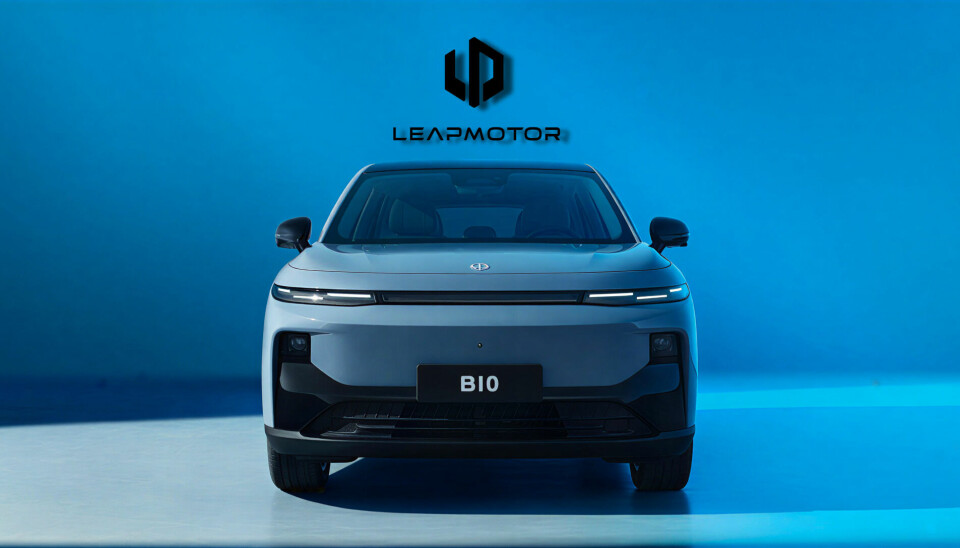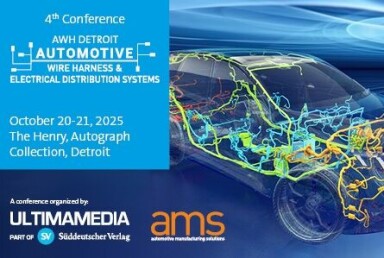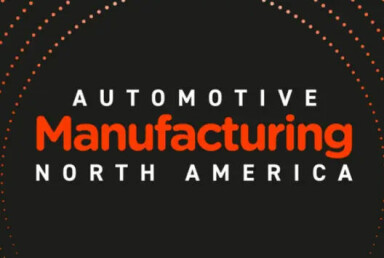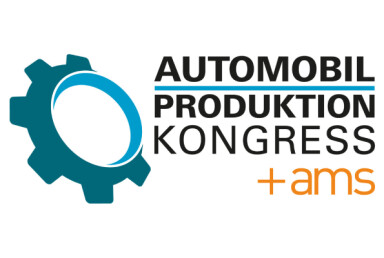Analysis: Platform & Priority Pivot
Leapmotor's LFP-powered B10 exposes European EV deficits

Chinese EV maker Leapmotor is disrupting Europe's compact SUV segment with aggressive pricing and imminent local production at Stellantis facilities in Spain, threatening incumbents with tighter margin management.
The compact SUV market in Europe, where full-electric models surged 174 per cent to 257,623 units through August, represents perhaps the industry's most fiercely contested battleground. Into this space steps Leapmotor, Stellantis' Chinese partner, with the B10, priced from just under €30,000 ($35,000). This month's European launch for the new model (expanding on the carmaker's initial 2024 launch in the region), marks a strategic inflection point not merely for Leapmotor International, the Stellantis-led joint venture, but for how legacy automakers must now recalibrate manufacturing footprints to remain competitive.
The tariff context is decisive to this development. Leapmotor currently faces a 30.7 per cent combined duty on exports from China—the result of Brussels' anti-subsidy investigation concluding that Chinese producers benefit from unfair state support. This comprises a 20.7 per cent countervailing duty layered atop the standard 10 per cent import tariff. For extended-range electric vehicles (EREVs), the same regime applies, creating a powerful incentive to shift production westward.
This localisation strategy represents a calculated pivot. Rather than accept margin compression from tariff passage, Leapmotor leverages Stellantis' manufacturing asset base to circumvent duties entirely.
Stellantis has already confirmed that B10 manufacturing will commence in Spain next year, though the company declined to specify which of its three Spanish plants—Zaragoza, Madrid, or Vigo—will host production. Spanish automotive capacity offers compelling logic: relatively contained labour costs, an established supplier ecosystem, and unexploited capacity. Industry sources suggest Zaragoza as the likely candidate, though such decisions hinge on broader portfolio optimisation within Stellantis' sprawling manufacturing network.
This localisation strategy represents a calculated pivot. Rather than accept margin compression from tariff passage, Leapmotor leverages Stellantis' manufacturing asset base to circumvent duties entirely. The economics favour production relocation once volumes justify fixed investment. Leapmotor International aims to sell between 50,000 and 60,000 vehicles globally this year, with Europe accounting for over 70 per cent of sales. These volume expectations suggest Spanish production economics become feasible within 18 months of European launch.
Equally significant is the precedent this establishes. Chinese EV manufacturers—historically dependent upon export-led growth from centralised production hubs—now face structural incentives to embed within European manufacturing infrastructure. Tariff avoidance becomes a lever for platform localisation, supply chain reconfiguration, and eventual deeper integration. Stellantis' infrastructure becomes Leapmotor's Trojan horse.
Daniel Harrison, automotive analyst at Ultima Media, observed that “the most significant aspect of the Leapmotor B10 announcement is that it confirms EU tariffs are working as intended to encourage localised investment and production.”
Leapmotor has an 18-month time to market, and the B10 is the first new product with inputs from Stellantis
Technology transfer from China-first development
The B10 represents an intriguing divergence in product development architecture. Launched at the 2024 Paris motor show and developed initially for Chinese markets, the B10 is nonetheless the first model designed by Leapmotor after it acquired Stellantis investment in 2023. Critically, "Leapmotor has an 18-month time to market, and the B10 is the first new product with inputs from Stellantis," according to Francesco Giacalone, head of product and marketing at Leapmotor International, speaking during a media event in Biot, southern France, on 13 October.

This timeline compression signals methodological divergence from traditional European development cycles. Leapmotor's proprietary LEAP 3.5 architecture underpins the B10, derived from platform development rooted in Chinese market requirements. The vehicle stretches 4,515 millimetres, spans 2,735 millimetres between wheels, and stands 1,655 millimetres tall. Such dimensions reflect Chinese consumer preferences: notably generous rear legroom and headroom that European compact SUV customers—accustomed to tighter proportions—may initially find atypical.
The B10's interior architecture reinforces this China-centric genesis. A 14.6-inch central touchscreen dominates the interface, with an 8.8-inch instrument cluster below. Critically, the vehicle eliminates conventional physical switches entirely—a design philosophy prevalent in contemporary Chinese models but rare in European offerings. Keyless entry utilises NCF-enabled credit card-sized access fobs swiped on the driver's side mirror, or the Leapmotor smartphone application. Drivers shift from park to drive or reverse electronically, with engagement requiring only the touchscreen.
This interface minimalism reflects divergent design philosophies between Chinese and European automotive traditions. Rather than retrofit European ergonomic expectations onto a China-optimised platform, Leapmotor implements iterative adaptation.
Francesco Giacalone noted previously that after receiving criticism regarding the C10 midsize SUV's driver-assistance system usability, the company developed a solution within six weeks—a responsiveness considerably exceeding traditional European development cadences. The imminent arrival of updated control interfaces enabling faster deactivation of advanced driver-assistance systems exemplifies this agility.
Battery architecture points to cost competitiveness. The entry-level B10 incorporates a 56.2-kilowatt-hour lithium iron phosphate battery pack delivering a 361-kilometre WLTP range. The long-range variant employs a 67.1-kWh LFP unit achieving 434 kilometres. In comparative testing, a long-range B10 demonstrated real-world consumption of approximately 15 kilowatt-hours per 100 kilometres, precisely aligning with official WLTP homologation—a rarity suggesting either conservative testing methodology or genuine efficiency gains from vertical integration. Charging speeds from a 168-kilowatt fast charger enable 50 per cent battery replenishment within 20 minutes for both variants.
Leapmotor B10
Market Disruption Through European Localisation
European Compact SUV Comparison
Competitive Advantages
The technological substrate reflects Leapmotor's historical competitive advantage: vertical integration across electric drive systems, battery engineering, and software architecture. Rather than reliance upon third-party components, Leapmotor manufactures proprietary drivetrains and battery modules in-house, mitigating supply chain fragmentation and cost inflation endemic to modular approaches.
Harrison also highlighted Leapmotor’s reliance on lithium iron phosphate battery chemistry and its decision to vertically integrate battery assembly. “The use of LFP battery chemistry rather than more conventional NMC technology – plus vertical integration of battery assembly – ultimately keeps overall EV costs down,” he explained.
Segment disruption through cost architecture
Through August, the Volkswagen ID.4 held segment leadership with 51,582 European registrations, marginally ahead of the newly launched Skoda Elroq at 48,975 units and Kia EV3 at 45,270. These three models account for approximately 57 per cent of full-electric compact SUV sales. The B10, by contrast, arrives with aggressive pricing that directly challenges margin expectations.
A Skoda Elroq with a 52-kWh battery and 350-kilometre WLTP range commands €33,900 ($39,500) in Germany. The equivalent Volkswagen ID.4 specification—identical battery capacity, 364-kilometre range—lists at €40,395 ($47,100). Leapmotor's entry-level B10, delivering superior battery capacity (56.2 kWh), comparable range (361 kilometres), and broader interior space, launches from just under €30,000.
This pricing architecture warrants structural analysis. Chinese automotive cost bases historically benefit from lower labour outlays, streamlined supplier ecosystems, and government support mechanisms. Yet Leapmotor's European positioning transcends simple labour arbitrage. The company achieves cost advantage through platform efficiency: the B10 derives from a China-developed architecture requiring no fundamental European adaptation, thus circumventing development cost capitalisation.
LFP battery chemistry, commodified through scale, undercuts NCA/NCM alternatives favoured by European competitors. Vertical integration reduces component costs substantially relative to modular approaches. Finally, distribution through Stellantis networks leverages existing infrastructure rather than establishing standalone dealer networks.
[European tariffs levied against China] are not suitable for strengthening the competitiveness of the European automotive industry in the long term
Leapmotor's margin mathematics and inverted market approach
Margin mathematics have become unforgiving for incumbents. Volkswagen's traditional financial models assume moderate volume, premium pricing, and high-margin software-as-a-service revenue. Leapmotor inverts this: accept slimmer per-unit contribution margins in exchange for volume acceleration and market share penetration. For manufacturers like Volkswagen and Skoda, this represents profound strategic distress. The combination of lower pricing, comparable technology, and superior interior space directly attacks the value proposition upon which established players have constructed European distribution strategies.
Crucially, this represents the first tangible test of whether tariff regimes can arrest Chinese competitive encroachment. The EU imposed definitive countervailing duties ranging from 7.8 per cent for Tesla to 35.3 per cent for SAIC, with Leapmotor facing 20.7 per cent additional levy. Leapmotor's tariff is marginally lower than BYD's 17 per cent rate, suggesting EU investigators viewed Leapmotor as less culpable of subsidy capture than the industry leader. Yet even at 30.7 per cent combined duty, importation economics remain viable through the remainder of 2024.
The strategic calculation shifts upon Spanish manufacturing commencement. Once Leapmotor begins European production, tariff exemption eliminates the primary cost disadvantage, rendering European competitors' margin structures unsustainable. Volkswagen's strategic warning that tariffs "are not suitable for strengthening the competitiveness of the European automotive industry in the long term," reflected precisely this calculus: tariffs neither prevent Chinese expansion nor improve incumbent positioning, merely accelerating the localisation of Chinese manufacturing capacity.
Leapmotor International's trajectory reflects broader industrial restructuring. The company commenced European sales last September with the T03 minicar and C10 midsize SUV. Through August 2025, Leapmotor accumulated 13,095 European registrations, with the T03 commanding 8,924 units. This progression—from market entry to segment penetration to mainstream competitive challenge—compressed into fewer than 12 months, underscores the velocity advantage Chinese manufacturers maintain once European manufacturing capacity materialises.
Extended-range electric vehicle expansion amplifies this competitive challenge. "With EREVs we lure customers who are attracted by electric vehicles, but not ready yet for a battery-only vehicle and its related range and charge anxiety," Giacalone stated. Leapmotor intends to introduce B10 REEV variants within approximately six months, potentially paired with an allwheel-drive electric configuration through front-axle motor addition. No determination has been reached regarding Spanish manufacture of REEV or allwheel-drive variants, though tariff economics mirror those of full-electric models—a combined 30.7 per cent duty applying to extended-range vehicles exported from China.
The REEV positioning deserves particular attention. European consumer adoption of plug-in hybrid technology has accelerated, particularly among buyers exhibiting range anxiety or requiring flexibility between electric and conventional propulsion. By offering B10 REEV variants at near-parity pricing with full-electric equivalents—a strategic contrast to European competitors' conventional hybrid pricing structures—Leapmotor addresses a psychological barrier that tariff analysis frequently overlooks. Tariffs address only cost, not consumer preference fragmentation.
Stellantis' strategic positioning merits consideration. Under new chief executive Antonio Filosa, Leapmotor represents "a very good" investment, announced at September investor conferences. For Stellantis, the partnership simultaneously achieves multiple objectives: access to cost-competitive Chinese EV technology, leverage of excess Spanish manufacturing capacity, direct participation in segment growth, and customer acquisition through differentiated pricing.
Critically, Stellantis absorbs no technology transfer obligation, maintains manufacturing control, and retains distribution authority—a structuring vastly preferable to conventional joint venture arrangements burdening European manufacturers in China.
Implications for competitive positioning
The B10 articulates a fundamental competitive discontinuity. European manufacturers have historically competed through premium positioning, technological differentiation, and margin protection. Chinese competitors, by contrast, deploy cost leadership and margin sacrifice to achieve volume. This divergence has intensified as tariff regimes fail to alter competitive incentives, instead merely accelerating localisation timelines.
For procurement and manufacturing organisations, the B10 represents a signal event. Spanish automotive capacity, long viewed as secondary to German manufacturing excellence, suddenly becomes critical to competitive survival. Supply chain participation in Chinese EV platforms now flows through European manufacturing hubs rather than direct export relationships. Tariff avoidance through localisation becomes a cornerstone of competitive strategy rather than a contingency planning exercise.
The implications extend across the automotive value chain. Battery suppliers, previously dependent upon Volkswagen, Renault, and PSA volume commitments, now navigate a fragmented market where Chinese vertically integrated competitors participate alongside traditional module and cell suppliers. Supplier margin compression accelerates. Tier-one system integrators face erosion of software-to-customer relationships as over-the-air update architectures enable manufacturers to capture software monetisation directly. Dealer networks confront margin pressure from simplified Chinese vehicle architectures requiring reduced service intensity.
For manufacturing strategy specifically, the B10 confirms that tariff regimes address symptoms rather than causes. Chinese cost competitiveness stems not from subsidies alone, but from integrated manufacturing ecosystems, labour arbitrage, platform efficiency, and willingness to accept lower per-unit contribution margins.
European manufacturing must either match Chinese cost structures through automation, efficiency gains, and supply chain reconfiguration, or retreat to higher-value segments where technological differentiation justifies premium pricing. The B10 permits neither approach: Leapmotor prices aggressively whilst incorporating contemporary technology, eliminating the margin buffer traditional competitors require.








